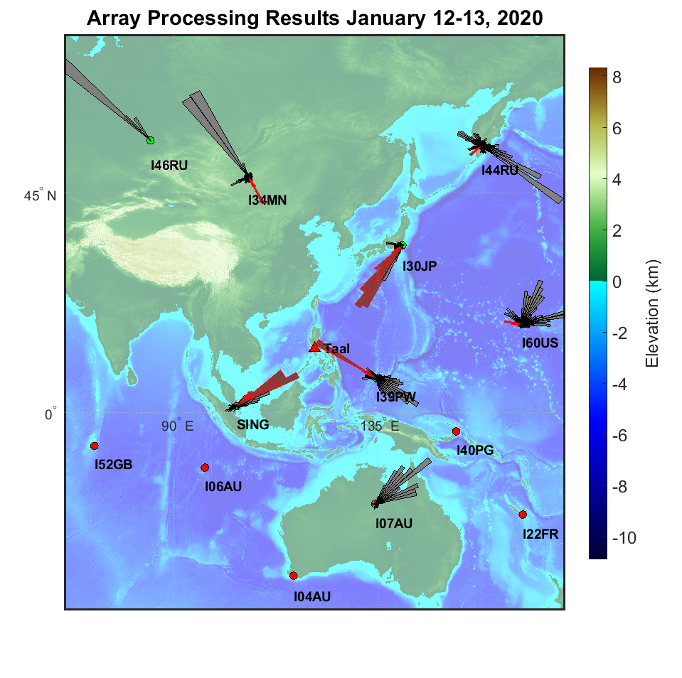When a volcano erupts in the darkness of night, or when it is blanketed by clouds, determining even the most basic information about the plume can be very difficult. Particularly for air safety, information like the time the eruption started, the height of the plume, and the eruption duration are crucial for determining what air spaces will be impacted.

Published on 15 September 2020, in the Journal of Volcanology and Geothermal Research, is a study I led that developed a new method to estimate plume heights. This method utilises the long-travelling low-frequency sound waves produced by the eruptions.
Infrasound, or sound that falls below 20 Hz, can travel thousands of kilometers and carry with it information about an eruption. It’s truly fascinating because if you think about it, infrasound is just sound. The only difference is that humans can’t hear it. And yet within that sound is a wealth of information that can protect and save lives.
The earlier work done on volcanic infrasound explored the relationships between infrasound and what was going on at the vent during an eruption focused on using stations on the volcano. My study uses these previously established methods to update the calculation of the exit velocity by expanding it to cover a much larger region.

By combining these data processing methods with atmospheric models of how sound changes with distance from a volcano, my team of researchers was able to calculate a plume height from over 5,000 km from a volcano.
Previously, these methods were only used on local stations located around a volcano. This marks a significant improvement in regional infrasound monitoring. We have gone beyond detecting and identifying signals from eruptions and can now use these infrasound signals to assess plume dynamics.
This method was applied to the Sangeang Api eruption in 2014, as well as the Taal eruption in January 2020. The Taal eruption was detected around the region with a clear signal on stations to the southeast. Based on this signal, this novel method was used to estimate the plume height from the eruption’s infrasound. Towards the end of the eruption on 13 January 2020, the plume became obscured by clouds, and the infrasound data showed that the energetic phase of the eruption was already over.

The Taal eruption was a test for an operational system that is currently being tested at the Earth Observatory of Singapore.